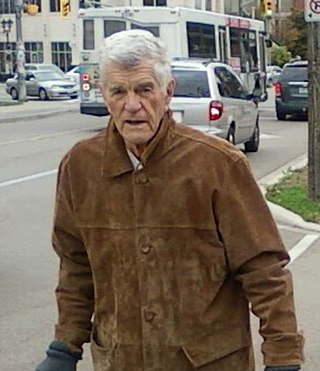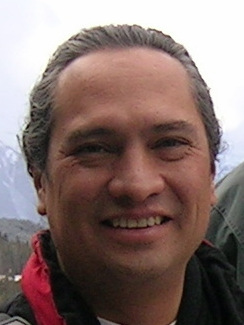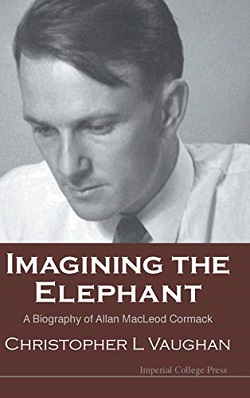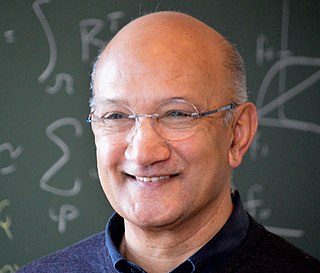Related Research Articles
Spasticity is a feature of altered skeletal muscle performance with a combination of paralysis, increased tendon reflex activity, and hypertonia. It is also colloquially referred to as an unusual "tightness", stiffness, or "pull" of muscles.

Biomechanics is the study of the structure, function and motion of the mechanical aspects of biological systems, at any level from whole organisms to organs, cells and cell organelles, using the methods of mechanics. Biomechanics is a branch of biophysics.

Gait analysis is the systematic study of animal locomotion, more specifically the study of human motion, using the eye and the brain of observers, augmented by instrumentation for measuring body movements, body mechanics, and the activity of the muscles. Gait analysis is used to assess and treat individuals with conditions affecting their ability to walk. It is also commonly used in sports biomechanics to help athletes run more efficiently and to identify posture-related or movement-related problems in people with injuries.

A gait is a pattern of limb movements made during locomotion. Human gaits are the various ways in which humans can move, either naturally or as a result of specialized training. Human gait is defined as bipedal, biphasic forward propulsion of the center of gravity of the human body, in which there are alternate sinuous movements of different segments of the body with least expenditure of energy. Gait patterns are characterized by differences in limb-movement patterns, overall velocity, forces, kinetic and potential energy cycles, and changes in contact with the ground.
Václav Vojta was a renowned Czech medical doctor who specialized in the treatment of children with cerebral palsy and developmental disorders. He discovered the principle of reflex locomotion, which is used to treat various physical and neuromuscular disorders through the stimulation of the human sensomotoric system's reflex points. Originally used in the treatment of spastic children, the technique is now used on babies and adults.
Patrick E. Crago is the Allen H. and Constance T.Ford Professor and Chairman of Biomedical Engineering at Case Western Reserve University in Cleveland, Ohio. Crago is a biomedical engineer currently serving as a Principal Investigator at the Cleveland FES Center.
Spastic diplegia is a form of cerebral palsy (CP) that is a chronic neuromuscular condition of hypertonia and spasticity—manifested as an especially high and constant "tightness" or "stiffness"—in the muscles of the lower extremities of the human body, usually those of the legs, hips and pelvis. Doctor William John Little's first recorded encounter with cerebral palsy is reported to have been among children who displayed signs of spastic diplegia.
A selective dorsal rhizotomy (SDR), also known as a rhizotomy, dorsal rhizotomy, or a selective posterior rhizotomy, is a neurosurgical procedure that selectively destroys problematic nerve roots in the spinal cord. This procedure has been well-established in the literature as a surgical intervention and is used to relieve negative symptoms of neuromuscular conditions such as spastic diplegia and other forms of spastic cerebral palsy. The specific sensory nerves inducing spasticity are identified using electromyographic (EMG) stimulation and graded on a scale of 1 (mild) to 4. Abnormal nerve responses are isolated and cut, thereby reducing symptoms of spasticity.

Kevin P. Granata was an American professor in multiple departments including the Departments of Engineering, Science and Mechanics and Mechanical Engineering at Virginia Polytechnic Institute and State University, in Blacksburg, Virginia. Granata held an additional academic appointment as a professor in the Virginia Tech-Wake Forest School of Biomedical Engineering and was an adjunct professor at the University of Virginia in the Department of Orthopedic Surgery. During the Virginia Tech shooting, he shepherded students into his office in order to safeguard them. He was then killed by Seung-Hui Cho after he went to investigate and intervene.

David A. Winter is a distinguished professor emeritus of the University of Waterloo. He was a founding member of the Canadian Society for Biomechanics and its first Career Award winner. He was later awarded the Muybridge Medal of the International Society of Biomechanics (ISB) and the Lifetime Achievement Award of The Gait and Clinical Movement Analysis Society. Before becoming an academic he served as an electrical officer with the Royal Canadian Navy on HMCS Nootka from 1952 to 1958. He completed his service at the rank of lieutenant commander. In December 2011, ISB named an award to encourage young people to stay involved in biomechanics research the "David Winter Young Investigator Award."

Spastic hemiplegia is a neuromuscular condition of spasticity that results in the muscles on one side of the body being in a constant state of contraction. It is the "one-sided version" of spastic diplegia. It falls under the mobility impairment umbrella of cerebral palsy. About 20–30% of people with cerebral palsy have spastic hemiplegia. Due to brain or nerve damage, the brain is constantly sending action potentials to the neuromuscular junctions on the affected side of the body. Similar to strokes, damage on the left side of the brain affects the right side of the body and damage on the right side of the brain affects the left side of the body. Other side can be effected for lesser extent. The affected side of the body is rigid, weak and has low functional abilities. In most cases, the upper extremity is much more affected than the lower extremity. This could be due to preference of hand usage during early development. If both arms are affected, the condition is referred to as double hemiplegia. Some patients with spastic hemiplegia only experience minor impairments, where in severe cases one side of the body could be completely paralyzed. The severity of spastic hemiplegia is dependent upon the degree of the brain or nerve damage.

Arm swing in human bipedal walking is a natural motion wherein each arm swings with the motion of the opposing leg. Swinging arms in an opposing direction with respect to the lower limb reduces the angular momentum of the body, balancing the rotational motion produced during walking. Although such pendulum-like motion of arms is not essential for walking, recent studies point that arm swing improves the stability and energy efficiency in human locomotion. Those positive effects of arm swing have been utilized in sports, especially in racewalking and sprinting.

Scott L. Delp, Ph.D., is the James H. Clark Professor of Bioengineering and Mechanical Engineering at Stanford University. He is the Founding Chairman of the Department of Bioengineering at Stanford, the Director of the National Center for Simulation in Rehabilitation Research (NCSRR), Simbios, the NIH Center for Physics-Based Simulations of Biological Structures at Stanford., and the Mobilize Center, a data science research center focused on mobile health.

Francisco Javier Valero-Cuevas is an engineer of Mexican origin, and a Professor of Biomedical Engineering, Biokinesiology and Physical Therapy, Aerospace and Mechanical Engineering, Computer Science, and Electrical Engineering at the University of Southern California. He is known for his work on how the human hand works, and its clinical applications. He is notable for several inventions, including devices for measuring hand function and leg function, and the construction of archways in civil engineering. Among his scholarly contributions is a textbook on the mathematical foundations underlying the study of motor control and biomechanics. He is an Elected Fellow of the American Institute for Medical and Biological Engineering (2014), an Elected Senior Member of the Institute of Electrical and Electronics Engineers, and a Thomas J. Watson Fellow.

Imagining the Elephant: A Biography of Allan MacLeod Cormack is a 2008 biography of physicist and Nobel laureate Allan MacLeod Cormack written by biomedical engineer and author Christopher Kit Vaughan and published by Imperial College Press. The book won the University of Cape Town Book Award in 2010, an honour shared with Nobel laureate J.M. Coetzee who won the award in 1984 for Waiting for the Barbarians.
Tania S. Douglas was a Professor of Biomedical Engineering, Research Chair in Biomedical Engineering and Innovation as well as Director of the Medical Imaging Research Unit in the University of Cape Town (UCT), South Africa. She conducted research concerning medical innovation, image analysis, and the development of technologies to improve medical device innovation in South Africa. She was also the founding Editor-in-Chief of Global Health Innovation, a journal which disseminates research results about health innovation in developing settings.

Batmanathan Dayanand Reddy is a South African scientist. He is Professor Emeritus at the University of Cape Town, holds the South African Research Chair in Computational and Applied Mechanics, and is the Director of the Center for Research in Computational and Applied Mechanics (CERECAM) there. From 2018 - 2021, he was the inaugural president of the International Science Council.
The Gait Kinetic Index (GKI) is the systematic study of the human motion, based on the Gait analysis, which allows to measure extensively the gait pathology taking into consideration kinetic aspects of gait pattern.

Diane Louise Damiano is an American biomedical scientist and physical therapist specializing in physical medicine and rehabilitation approaches in children with cerebral palsy. She is chief of the functional and applied biomechanics section at the National Institutes of Health Clinical Center. Damiano has served as president of the Clinical Gait and Movement Analysis Society and the American Academy for Cerebral Palsy and Developmental Medicine.
References
- ↑ "University of Cape Town / Newsroom & publications / Monday Paper". Archived from the original on 12 June 2012. Retrieved 2 June 2010.
- ↑ "Council Candidate: John H. Challis, Ph.D. (U.S.A.) - International Society of Biomechanics". International Society of Biomechanics. Retrieved 16 October 2017.
- ↑ "UCT brings biomechanics conference to Africa". www.uct.ac.za. Retrieved 16 October 2017.
- ↑ "MRC/UCT Medical Imaging Research Unit". Archived from the original on 7 March 2012. Retrieved 2 June 2010.
- ↑ "Medical biography picks up UCT book award". www.uct.ac.za. Retrieved 16 October 2017.
- ↑ "Imagining the Elephant". Archived from the original on 28 July 2011. Retrieved 2 June 2010.
- ↑ "The Nobel Prize in Physiology or Medicine 1979". nobelprize.org. Retrieved 16 October 2017.
- ↑ "IAMBE". Archived from the original on 28 August 2008. Retrieved 2 June 2010.
- ↑ Staff Reporter. "On the cutting edge of knowledge". The M&G Online. Retrieved 16 October 2017.
- ↑ Shapshak, Toby. "Exclusive: Real Solutions To Real Problems Named In Innovation Prize For Africa 2016 Finalists". Forbes. Retrieved 16 October 2017.